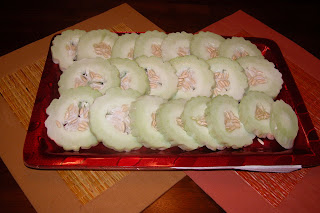
Last week I harvested a behemoth Armenian cucumber from my garden. Because I didn't trellis my cucumbers, it was able to grow unnoticed for who knows how long to reach 21 inches long and four and a quarter pounds, before I finally caught sight of it glistening under the foliage as I watered.
It's been a week since harvesting this giant vegetable. I hadn't cut into it because it was so beautiful, and I wanted to admire it. But this morning, I decided it was time. And so I cut it down the middle and removed a thick slice and took a bite.
It was delicious and refreshing and delightfully crisp. I found the skin a little tough--because summer does that to the skins of produce--but not so tough as to make it unpleasant to consume. It's, as you might imagine, seedy. However, those are easily removed.
I'm thrilled that the cucumber is edible, and will bring it to work to snack on all day, drizzled in olive oil, balsamic vinegar, smoked sea salt and cracked black pepper.
I'm glad also because I harvested its little brother yesterday. That cucumber is over three pounds and about 18 inches long. From that one, I will make a refreshing cold Summer soup.
Cold Cucumber Tofu Soup
Makes 2 to 4 servings
- 2 large cucumbers peeled, seeded & chopped into chunks
- 1 Large shallot, diced
- 2 cloves of garlic, minced
- 1 package of silken tofu (about 8 ounces)
- 1 carton of pain yogurt (about 8 ounces--hold some aside)
- 2 cups chicken or vegetable stock
- Salt & pepper to taste
- Chives for garnish
Directions
- Place stock, tofu & yogurt in a food process; process until smooth.
- Add shallot and garlic and blend together.
- Add cucumber chunks and process until pureed.
- Add salt and pepper to taste.
Serve chilled, topped with dollop of yogurt or sour cream and garnish with chives.
NOTE: This soup can have a slightly grainy texture because of the cucumber. If this is unpleasant to you, simply strain the soup before serving.







